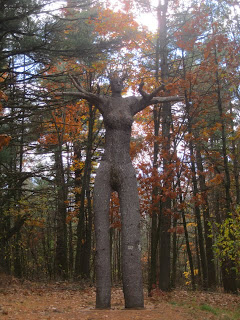
What intrigues me most about artists is not necessarily what they are working on but where they came from and where they have been. Just by learning about someone’s past you gain a greater appreciation for what they create now and who they are. Their background influences every piece of art they make, paint, or build, whether they know it or not.
When I spoke with Eric Sealine, this same fact proved to be true as well. Sealine’s current and future work is based on his past experiences. Sealine has a show scheduled for 2012 at the Boston Sculptors Gallery. The theme for his show, unless things change, will be based on the creek that he played in when he was a kid in Delaware.
Through perspective, Sealine wants to show the natural history of the creek he so often visited as a child. He is very interested in the idea of perception and how it works. People are easily fooled, why is that? People also love to be fooled. However, he does not want the show to be a story of loss but instead that of a gift he experienced as a child. He is also trying to incorporate how our memories get smoothed and changed by taking them out and toying with them as we get older. The concept is one that anyone can relate to.
Sealine’s past has influenced his work in numerous ways. For example, he has built boats by hand and still has the first boat he ever built, which he sails to this day. He was also an architectural model maker. His carpentry skills translate directly to his current works in progress, as well as his studio, which he built.
A lot of Sealine’s work has a three dimensional illusion to it. The picture above is a good example of a three dimensional illusion. It has no official title yet but is just being called, A Work in Progress. Sealine’s work is fun and carefree and when I see this picture, well, I enjoy being fooled. Submitted by Jen Costa, Boston Sculptors Gallery intern.




.jpg)















